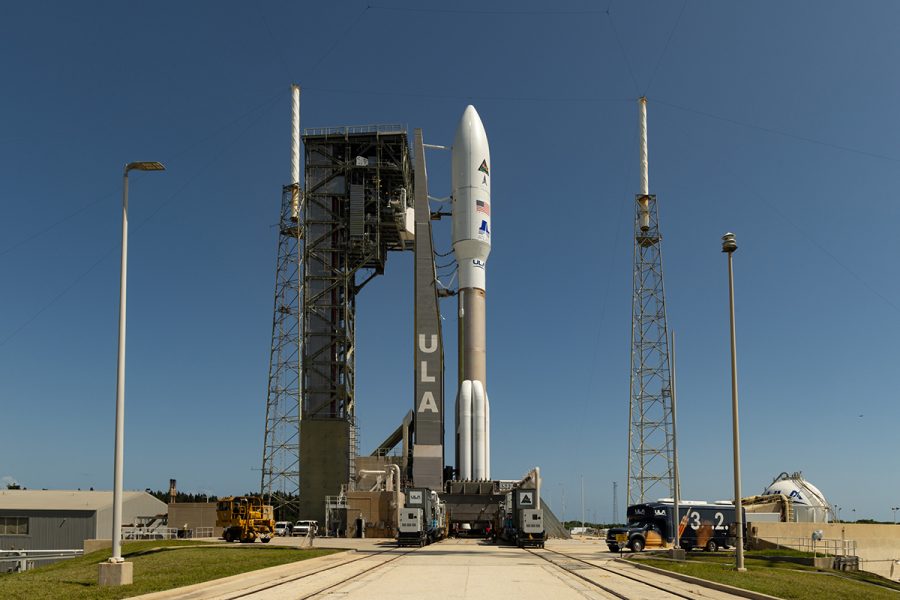Speaking at an event hosted by the Mitchell Institute of Aerospace Studies, Troy Meink frequently cited the NRO’s history when describing how the intelligence organization is tackling new challenges.
Established in 1960 to manage Air Force, Navy, and CIA reconnaissance efforts, the NRO’s very existence remained classified until 1992. Even after that, many of its activities remained shrouded in mystery, but in recent years, the agency has taken a more public role in the Pentagon’s growing space enterprise.
Perhaps the NRO’s most high-profile effort is teaming up with the Space Force to provide ground moving target indication (GMTI) and replace legacy Air Force platforms with new satellites. Exactly who will control the satellites and how fast the intelligence community can provide data to service members is still up for debate, but Meink argued the NRO is uniquely positioned to support the mission.
“We’ve been looking at operational support, looking for moving targets, really, almost since the first Gulf War,” Meink said. “ … This is just an extension of, to be honest, what we’ve been doing for many years. And we’re working closely with, obviously, [Air Force Secretary Frank] Kendall, [Chief of Space Operations Gen. B. Chance] Saltzman, and the entire Space Force staff to deliver that capability.”
Specifically addressing concerns about whether the NRO can provide targeting information at tactically relevant speeds, Meink said the agency has experience moving fast.
“I think it’s important to note that many of the timelines we’re talking about today, the NRO was already supporting. This is a new phenomenology, this is new capability, but it’s not new mission for the NRO,” he said. “The timelines that we’re talking about here is not something the NRO has not been worrying about for many decades.”
Particularly since being declassified, Meink added, the NRO has worked on tighter timelines.
“The good thing is, we’re not starting from scratch. The NRO’s been around for a long time. We’re a highly classified organization. The last 30 years, it’s been more open, and that’s come with a lot more direct support for those missions that require that timeline,” he said.
Still, Meink acknowledged that the GMTI mission his agency is working on with the Space Force will require speed and scale on a whole new level, to encompass everything from how the new satellites are tasked, how the data is processed and fused with other sources, and how to manage the sheer volume of information coming in.
To address some of those issues, the NRO has invested in cyber and artificial intelligence, increasing its computing power and hiring data scientists to identify what levels of AI it will need at different points in the process. Commercial industry will also play a role.
“A big part of us is now we don’t have to develop [AI technologies] from scratch. In many cases, we’re just adapting them to our environment,” Meink said.
Another major challenge is just how rapidly the NRO needs to adapt to keep up with the state of the world.
“The rate of change, given the threats we face, how fast that threat is evolving, how fast the demands for capability that not only the NRO but the entire space industry is seeing, requires a rate of change that’s really faster than maybe almost since the beginning of the NRO,” Meink said.
Many of these challenges are not unique to the GMTI mission. Meink cited similar lessons from another joint NRO-Space Force venture, SILENTBARKER, a new space situational awareness satellite that launched in September 2023.
“You’re integrating a new capability into a very large enterprise. How does that data flow to everybody who needs it, on timelines? … It’s one of those things, as you field new capability, how do you incorporate that into a very large, diverse ground infrastructure? That’s probably been some of the biggest lessons learned there.”


